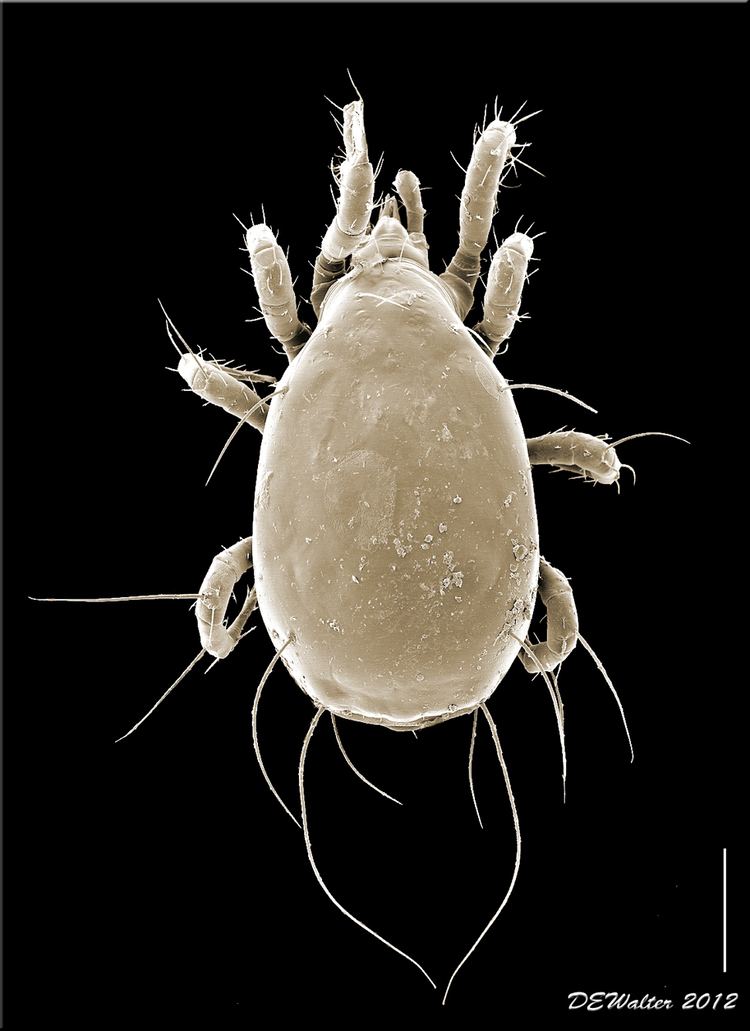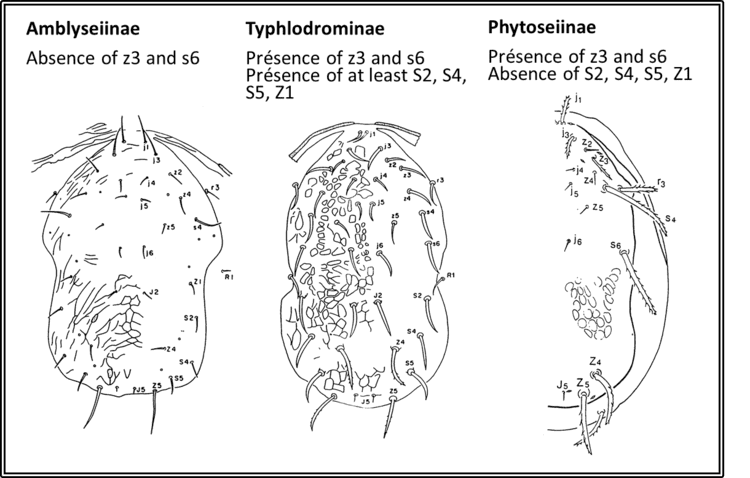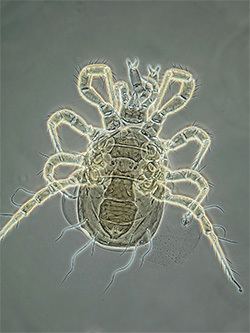Scientific name Phytoseiidae Order Mesostigmata | Superorder Parasitiformes Rank Family Subclass Acari | |
 | ||
Lower classifications Predatory mite, Amblyseius, Typhlodromus, Amblyseius californicus, Euseius | ||
Phytoseiidae feeding on tetranychidae
The Phytoseiidae are a family of mites which feed on thrips and other mite species. They are often used as a biological control agent for managing mite pests. Because of their usefulness as biological control agents, interest in phytoseiids has steadily increased over the past century. In 1950, there were 34 known species. Today, there are 2,731 documented species.
Contents
- Phytoseiidae feeding on tetranychidae
- Phytoseiulus persimilis persimilis mite consuming tetranychus urticae two spotted spider mite
- Subfamilies
- Lifestyles
- Phytoseiidae as biological control agents
- Wolbachia infections
- References

Phytoseiulus persimilis persimilis mite consuming tetranychus urticae two spotted spider mite
Subfamilies
The Phytoseiidae family contains these subfamilies:
Lifestyles

Phytoseiids are best known as predators of small arthropods and nematodes, but many species are also known to feed on fungi, plant exudates, and pollen.

Scientists have proposed classifications of the Phytoseiidae based on their food sources. In the most current version, developed in 2013, phytoseiids are grouped into four types.

Phytoseiidae as biological control agents

Phytoseiids are an important natural predator of the spider mite. When phytoseiid populations decline, spider mites can severely damage commercial crops. Since World War II, spider mite (tetranychid) populations have increased due to the use of synthetic pesticides. The reason pesticides have increased spider mite populations remains mysterious to scientists, but it has spurred an interest in phytoseiids as biological control agents. So far, research has shown that phytoseiids are effective control agents in their native environments, but introducing them to foreign populations has not been successful in reducing the numbers of spider mites.

Phytoseiid species that act as biological control agents are influenced by the availability of their prey. Phytoseiids can postpone or delay egg production during periods when prey are scarce. This allows them to have a longer lifespan and likely serves as an adaptation to environments where prey availability is variable. In addition to being able to delay reproduction, phytoseiids are also capable of rapid reproduction when prey is readily available. They reproduce more when prey availability is high, which increases their effectiveness as biological control agents. When prey availability increases, females lay more eggs, and more healthy offspring are produced during reproductive periods. In addition, when prey availability increases, the Phytoseiidae kill more prey during reproductive cycles, and the ratio of prey killed to eggs laid increases.
Wolbachia infections
Wolbachia, a parasitic bacterial genus that affects a vast array of arthropod species such as Drosophila simulans, is common in the Phytoseiidae. It affects gender determination and reproduction of its hosts, making it a powerful agent of evolution. Wolbachia species have been detected in many species of the Phytoseiidae, both in the field and in the lab. Although most research focuses on Wolbachia in germ line tissues, the bacteria can also be found in somatic tissues. Wolbachia's main method of spreading is to be passed down through the generations in germ line tissues, but it is also capable of being transferred horizontally.
Although Wolbachia bacteria do not benefit their hosts in any way, they are maintained in the population because infected mothers pass them to their offspring through the ovum. Over time, bacterial presence in a population can lead to complete reproductive isolation of that population from uninfected populations. Wolbachia causes speciation through reproductive isolation. Some hosts evolve with a dependency on Wolbachia for reproductive functions, so that individuals without Wolbachia infections have lower reproductive fitness.
Wolbachia influences the gender determination of its hosts, making females more common than males. In populations affected by Wolbachia, females commonly compete for the right to mate with males. This is one of the ways in which Wolbachia infections can lead to speciation, because females evolve traits that allow them to better compete for males. In extreme cases, the feminizing effect of Wolbachia can cause the host species to lose the chromosome responsible for female gender. Wolbachia infections are capable of causing the extinction of hosts by making females much more common than males.
